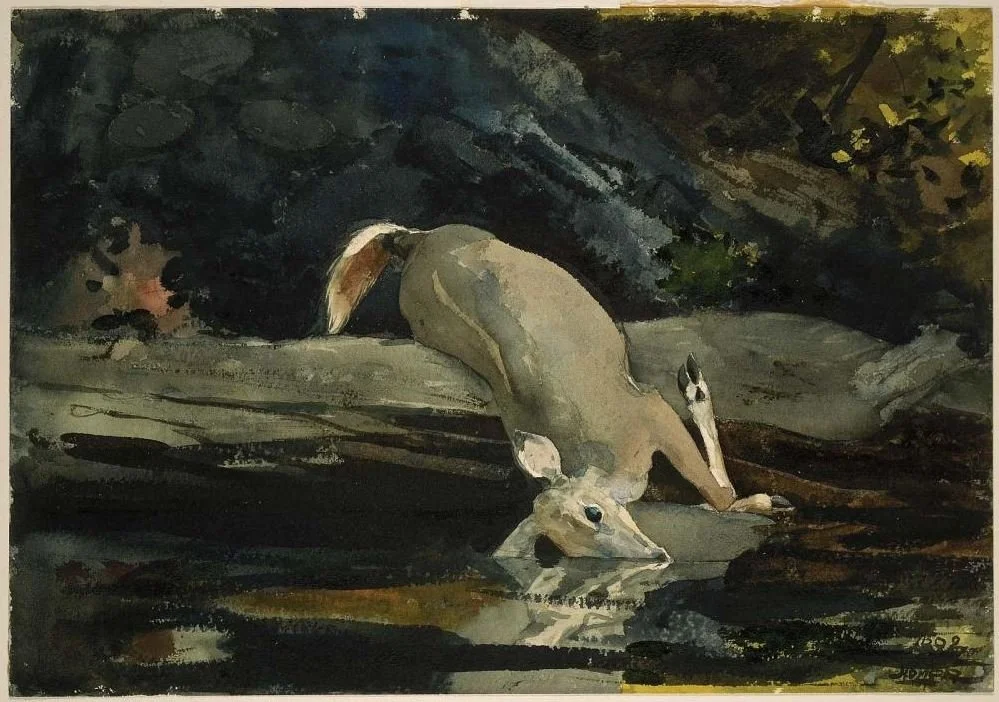On Homer
“End of the Portage” 1897
In an effort to promote the arts, and share some of my inspirations, I’ve decided to do a few short journal posts on art history. I’m not an expert, but I’ve done some research and developed an appetite for it. I consume art the same way I do just about everything in my life, with manic bursts of fixation and compulsive obsession. When I find a painter whose work I connect with, I dive into their portfolio and plaster my space with their work. One such painter whose work decorates the halls of my mind is Winslow Homer (1836-1910).
Homer is one of the founding fathers of traditional American sporting art: the depiction of hunters and anglers interacting with their landscape and quarry. Although his career started in lithography and illustration, Homer quickly rose to fame for his talents in oil painting and watercolor. He is still regarded as one of the best oil painters in American history. His interest in sporting pursuits arose from frequent fishing trips to the Adirondacks in upstate New York, which he enjoyed all his life.
“Shooting the Rapids” 1902
Homer’s watercolor sketches and paintings were revered for their unique combination of loose brush strokes and fine detail. He earned the nickname “the eye surgeon” for his ability to mark extremely fine details, often with a knife blade, to evoke emotional gestures from his subjects. I romanticize what life was like for Homer, hunting and trapping from canoes in Maine, fishing in Homosassa and the Keys, and frequent trips to Cuba. His most famous painting is probably “The Gulf Stream” which he painted shortly after the death of his father. He was deeply infatuated with the power of the ocean, and reflected often on the mortal relationship between humans and nature.
“The Fallen Deer” 1892
Homer’s depictions of hunting scenes were often meant to stir the viewer with uncomfortable and sometimes grotesquely posed game. Homer to this day is one of the few sporting artists who chose to show the unromantic side of hunting. He was sometimes frustrated with how his works were perceived, however, because he never meant to show cruelty, only the difficulty of taking a life. I’ve included a few of my favorite works here for your enjoyment, but I encourage you to peruse his larger body of work which is available in lots of different collections including the Metropolitan Museum, the Brooklyn Museum, and the Museum of Fine Arts Boston.
“Homosassa River” 1904




